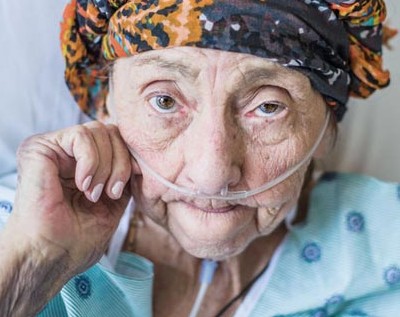By Joseph Shega, MD, Chief Medical Officer, VITAS Healthcare
When you refer your patient to hospice care with VITAS, we help to determine the best care setting. Most of the time, hospice care is provided to the patient at home or the patient’s preferred setting, such as a nursing home or assisted living community. Sometimes, patients require inpatient care.
When the VITAS hospice interdisciplinary team determines a hospice patient’s symptoms and pain can no longer be managed and controlled at home, the team may move the patient to a 24-hour inpatient hospice unit or care facility.
General inpatient (GIP) care is one of four levels of care that Medicare requires hospices to offer in order to be certified to provide services. At VITAS inpatient hospice facilities, care is provided in a home-like setting. Friends and family members are welcome to visit at any time in accordance with safety guidelines, and overnight stays can be arranged.
Once symptoms and pain stabilize during inpatient hospice care, the patient can return to hospice care in their preferred setting.
Which Patients Qualify for Inpatient Hospice Care?
A variety of hard-to-manage symptoms may indicate that a patient is eligible* for inpatient hospice care:
- Sudden deterioration that requires intensive nursing intervention
- Uncontrolled pain
- Uncontrolled nausea and vomiting
- Fractures with symptoms
- Unmanageable respiratory distress
- Symptom relief via intravenous medications that require close monitoring
- Wound care that requires complex and/or frequent dressing changes that cannot be managed in the patient’s residence
- Unmanageable agitation; delirium; or acute severe anxiety
- Uncontrolled seizures
Consult our disease-specific guidelines help determine hospice eligibility.
*Decisions regarding eligibility for a level of care are made by the physician in conjunction with the interdisciplinary team.
When Are Patients Discharged from Inpatient Hospice Care?
Inpatient hospice care is intended to be temporary, allowing patients to return home to familiar surroundings, loved ones, and a routine level of care as soon as possible. The following guidelines indicate a patient may be ready to discharge from inpatient care:
- Symptoms have stabilized
- The patient has transferred to another level of care (i.e., continuous care)
- Medication requiring skilled nursing care is no longer necessary
Who Pays for Inpatient Hospice Care?
Medicare Part A covers up to 100% of the cost of hospice care related to a hospice-eligible patient’s diagnosis, with no deductible or copayment. For patients with Medicare Advantage, hospice is covered by original Medicare. Patients with a private or employer-provided health plan should check with their insurance provider for details about hospice eligibility, coverage and out-of-pocket expenses. Medicaid coverage for hospice care varies by state.
When care unrelated to a patient’s advanced illness is necessary, Medicare Parts A and B may cover expenses under normal rules.
Questions About Inpatient Hospice?
When symptoms can no longer be managed at home, inpatient hospice care from VITAS offers round-the-clock inpatient care in a warm and comforting environment. If your patient or resident with advanced illness is living with complex symptoms and serious pain, schedule a consultation with VITAS and help your patient embrace quality of life near the end of life. Contact VITAS via phone, app or referral form today to determine whether hospice is right for your patient.
Originally published in October 2019.


